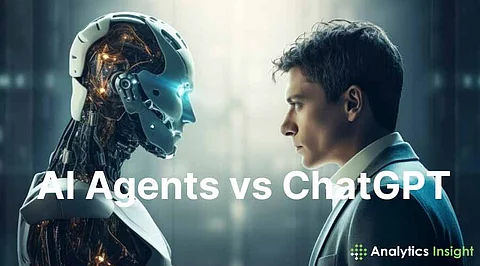

The landscape of artificial intelligence is evolving at breakneck speed, giving rise to innovative technologies that cater to a wide array of user needs. Among these, AI Agents and ChatGPT stand out as transformative tools. While both aim to enhance user interaction, they differ significantly in their capabilities and applications.
AI Agents are designed to work on their own, completing tasks by themselves. They may look at data, decide what to do, and then act on it - either by rules or learned behavior. This means that agents can function in many locations, from customer service and logistics to healthcare.
For example, an AI agent in customer support can answer questions, process orders, or solve problems without human intervention. They can quickly tap into the most recent information through connectivity to other systems and provide accurate responses. They can learn from a conversation, improve with experience, and perform their jobs even more effectively as time passes.
ChatGPT, developed by OpenAI, is a language model that specializes in generating human-like text based on the input it receives. It is very good at understanding what people mean and talking clearly during a conversation. Many people use ChatGPT for different reasons, such as chatbots, content creation, and even education.
Its strength lies in chatting with users using natural language processing. In a nutshell, it can answer questions, give explanations, and even help with writing projects.
This makes AI agents more independent since they can work independently and tackle complex tasks without human intervention. They have some specialized programs that help them analyze situations and decide what action to take based on the information they obtain. This is why they are ideal for applications where speed in response is essential.
ChatGPT is dependent on what users say in order to produce answers. It can provide helpful information and even exchange messages, but it cannot perform tasks independently. It needs to be instructed to start speaking. This is vital since every technology has a specific role in AI.
AI Agents are applied in many sectors because they can automate tasks and increase efficiency. For instance, in logistics, AI Agents can find the best delivery routes using real-time traffic data and customer preferences.
AI agents in health care can assist in managing patients by scheduling appointments, sending reminders, and monitoring patient health data. Automating such tasks allows healthcare workers to spend more time with patients than office work.
ChatGPT has found specific usage mainly in areas that necessitate human-like interaction. Businesses use it for customer support chatbots, providing instant answers to most questions. It improves user experience because, through this technology, a response is provided immediately without much waiting.
In education, students use ChatGPT as an asset when they need clear explanations or help with their assignments. The copious responses generated by ChatGPT make it a valuable learning resource.
AI Agents and ChatGPT will most likely be further improved in the future. With new machine learning methods, the AI Agents would be able to accomplish more complex tasks more precisely. Simultaneously, further advancements in natural language processing will enable ChatGPT to have better conversations with users.
Combining these technologies will create new applications that can extract the best from AI Agents and ChatGPT. For instance, by integrating the AI Agent's ability to make decisions with the capabilities of ChatGPT in holding a conversation, an entertaining experience is achieved for the users.
Summary: AI Agents and ChatGPT are two types of artificial intelligence. Though AI Agents can perform tasks in numerous areas, the best part of ChatGPT is writing human-sounding texts and conversing with users. Thus, the differences between these technologies need to be understood to be applied more efficiently.
As the landscape of artificial intelligence keeps changing, AI agents and ChatGPT will carry much significance in how people and businesses interact with technology. Many future developments will enhance the capabilities of both systems even more, eventually helping all users worldwide.
